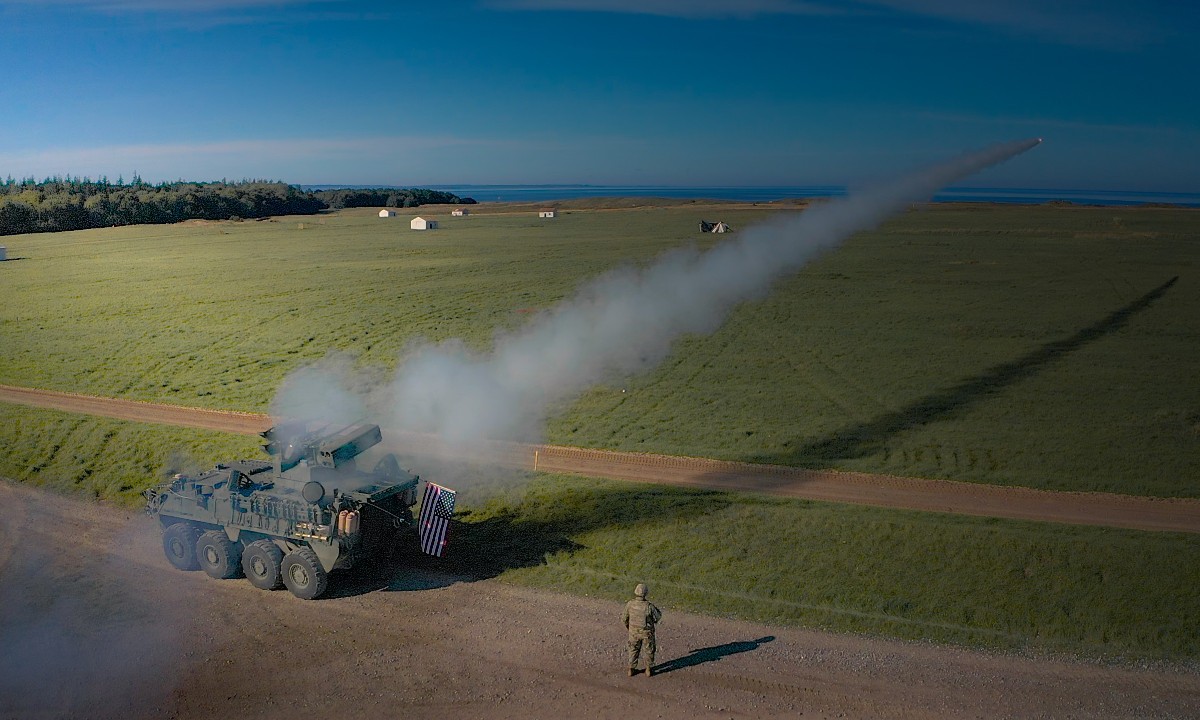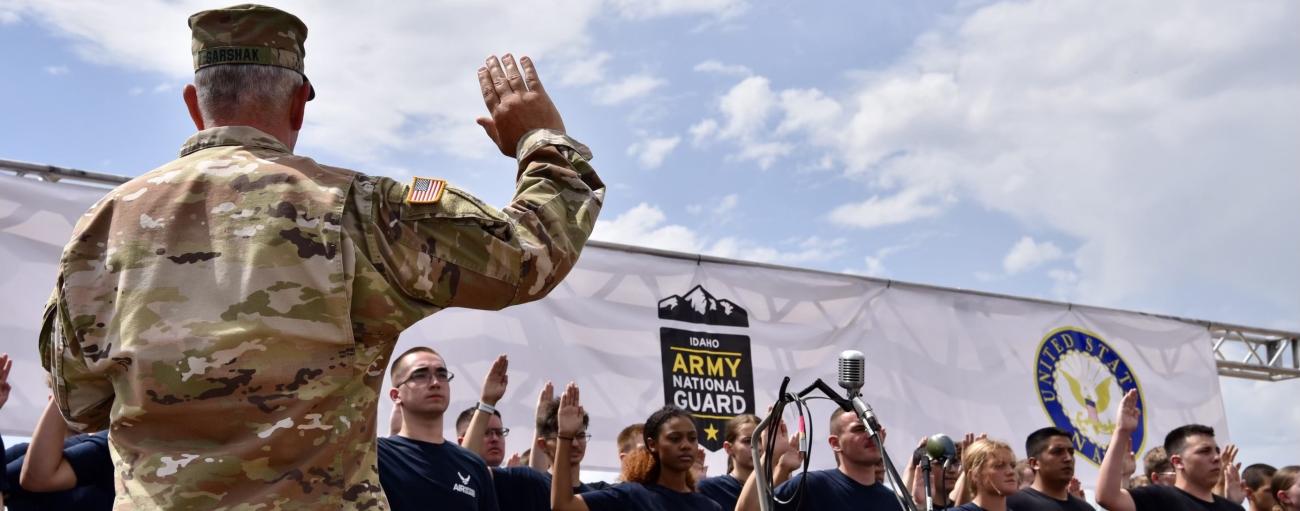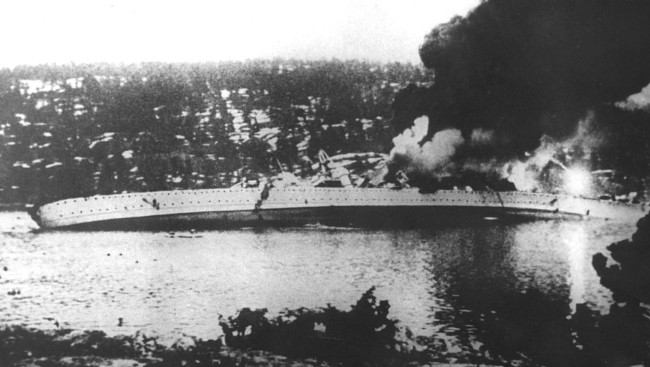I warned of more to follow....
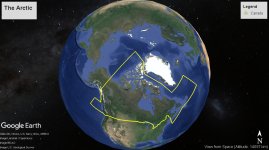
I have been highlighting this view of the Arctic. It emphasises the position of Canada with respect to Eurasia and the Arctic Ocean and the role of the Arctic in managing the Pacific and Atlantic Oceans.
Throw in the US/Them line and the impact of aerial assets and you get my NORAD centric view of Homeland Defenc(s)e.
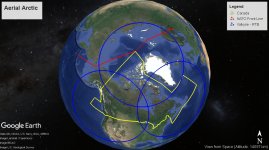
But that isn't the real world.
This is the real world.
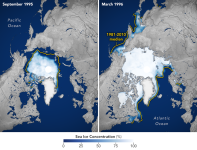
Several record-setting summer lows, combined with poor wintertime recoveries, have fueled a persistent decline over the past few decades.

earthobservatory.nasa.gov
|
At least that is part of the real world picture - an ice-cube bobbing around on top of the Arctic Ocean, that shrinks and expands every year.
But that is still not the whole picture.
This is.

At this time of year you could run a dog sled from San Francisco to Kyiv. Or Seoul if you prefer. And at the Iditarod pace of 1800 km in 10 days you could cover the distance in 50 or 60 days. Long before the ice melts for the season. Canada - 9 months of winter and 3 months of hard sledding. Dogs and sleds have been around for at least the last 10,000 years. Reindeers or Caribou will haul more, farther and faster and give you a drink of milk along the way. But I digress.
The important bits are:
The Arctic is Ice.
Ice divides the Sky from the Water.
Ice extends the Land over the Water.
Ice is seasonal.
Canada is a seasonal country and so is its Arctic.
Waterborne transportation in Canada has always been seasonal. Run down river in the spring freshets after break up. Go back up river when the flow slackens. Or wait a little longer until it freezes up again and have your dogs haul you back home. There is a distinctly Canadian rhythm to life up here. A rhythm that extends all the way south to the St Lawrence and the opening of the Seaway.
Canada's Arctic has to be managed according to that rhythm. Summer and Winter.
Air power can assist the efforts on the Ground and those in the Water year round. But it cannot defend Canada unassisted. It needs help from others.
In winter, in particular, it is necessary to penetrate under the Ice.
....
Previously I made note of the strategic importance of the Arctic Ocean as a transit route between the Atlantic and Pacific and also as a Bastion for SLBMs. Everybody's SLBMs. It is also a buffer zone between Eurasia and the Americas, us. Dominating that space is important. As much as our government subscribes to the theory of the Commons I am of the common opinion that that leads to tragedy. Enclosure is a better policy. But if we are going to claim our enclosure then we had best define and control it
....
Most of our Arctic Enclosure is Water. And for most of the year a good chunk of it is covered with Ice, hiding the activity below it. This is what limits the efficacy of aerial assets.
Conventionally water is controlled by ships. But as the RN demonstrated, ships don't fare so well in the Ice. What does work well in the Ice are submarines. In particular nuclear submarines. Very capable, with lots of sensors, and lots of effectors and very expensive. And requiring lots of well trained crew and a massive support system. For a variety of reasons they have not been a popular solution for the RCN.
But are they necessary to control our Arctic?
I said that most of our Arctic Enclosure is Water. A large part of it is actually land. And that land creates passages, channels or, if you might, canals. There are a limited number of routes through the islands of the Arctic from the Atlantic to the Pacific.
This is due to the dominating presence of three islands: Baffin, Ellesmere and our Danish neighbour, Greenland. The gap between Baffin and Ellesmere Island is filled by Devon Island.

So, about those Passages.
Not all of them are viable, even during the summer months. The southern ones tend to be about 50 m deep (0 to 100 m) and can shoal up to 0 m where they don't actually bump into islands. Baffin Island is an island in name only. It functions more like a peninsular extension of the mainland.
The more practicable routes are those north of Baffin Island. Those routes sound out over 100 m deep and can be in the neighbourhood of 500 m deep. But there really are only three of those routes:
Nares Strait between Greenland and Ellesmere which is only 25 km wide at its entrance, adjacent to Alert, 40 km at its southern exit and as narrow as 15 km at Hans Island;
Parry Channel between Baffin and Devon which shoals up to around 100 m in the neighbourhood of Resolute on Cornwallis Island, just west of Devon and;
Jones Sound between Ellesmere and Devon which rises to a depth of about 150 at the 15 km wide choke point between Devon and Ellesmere.
Three routes that might be accessible to submarines with a brave captain and/or an agreeable host.
...
Do we really need submarines to control those choke points?
How about a Gibraltar strategy?
....
Submarines control their environment with torpedoes. They monitor their environment with sound. Sound ranges far and wide. Torpedoes have a functional range of about 50 km from Open Source Intelligence
....
Drawing some 50 km circles around our Arctic choke points yields this map
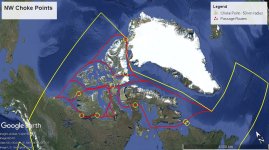
Call it 8 Choke Points if we include the eastern entrance to Hudson Strait at the south end of Baffin Island, 9 if we take into account the need for a twin capability their due to the limited range of a torpedo.
Now we could park a sub, or even an AOPS, or both, at each of those Choke Points. And build 3 or 4 more to maintain a permanent presence.
Or we could do the other thing.
A submarine sits, listens with microphones and launches torpedoes. It typically has 6 tubes of 21" diameter and 3 or 4 reloads for each tube.
Rather than buying submarines to defend our Arctic Archipelago, to monitor our Passages and control our traffic why not buy a 21" drill?
And at each choke point start drilling, slantwise, from the dry surface, through the living rock until you reach salt water. Drill 8 tubes at each location. Fill 6 tubes with 50 km heavy torpedoes and use two for microphones. Connect all systems to command and the Common Picture by radio, or satellite or Link or whatever works best.
It would be cheaper. By orders of magnitude.
It could be remotely monitored and controlled, from a couch (just like the Valkyrie type UAVs).
And, by tucking everything into tubes you protect all of that sensitive electronic stuff from the risk of ice and rocks ripping your gear apart.
....
Companion effectors for the Arctic. UAVs and Torpedoes. Without the need for aircraft, airfields, ships or submarines. The backyard is secured and the money saved can be expended on expeditionary forces that will buy us some influence internationally.
....
One final point -
Securing the ground.
This is not an army job.
In the US the defence of the Homeland largely falls on the Guard: the Coast GUARD and the National GUARD and the offspring of the National GUARD, the Air National GUARD. The GUARD has a very high civilian component, a large component of part timers and has a broad spectrum of responsibilities that range from intercepting incoming missiles as well as foreign vessels to supplying SAR services, putting out fires and responding to disasters.
In the Canadian context I would suggest looking at our RCMP, our Coast Guard and the RCAF's Yellow Fleet and NORAD response and considering them along with the Canadian Rangers as a domestic Scarlet Force. Expand the Rangers and increase their capabilities. The Rangers are a national institution. Although they are associated with the First Nations they also have a "Settler" component. Newfoundland, the Island, has its own Ranger patrols. And there aren't many Beothuks in evidence on the Rock these days.
Those are the elements around which I would build a national force, that parallels the US Guard forces in both their civil and military roles.
....
The proper role of the CAF, in my view, is more akin to the US Marines. A multidomain force that supports an active Global Affairs policy to increase Canada's influence on the world stage. A Blue Force.
And on that.....
More to follow..
...
PS Why do I include the RCMP in the domestic Scarlet Force, beyond the colour of the uniform and their omnipresence? Because there has been some recent discussion about revisiting the RCMP's roles and perhaps separating its patrolling and local policing duties from national security and investigative duties. I think that organizing that the existing RCMP community policing structure, combined with the RCAF SAR and the Coast Guard as well as an enhanced Ranger component would be complementary.
NORAD, would continue as is, although perhaps there should be a Ranger element in airfield security and local air defence.
Class C, B and A service. All separate from the Blue Force FTE requirements.








